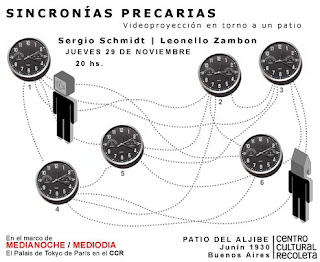Processing is a development environment that enables artists, designers and enthusiasts in general to create applications for manipulating images, sounds and interaction in general easily.
The idea is to present some of the possibilities of processing using a camera. In this article I will concentrate on a program that captures and displays images from the camera constantly, when you click the mouse a new static image is directed toward the viewing area like a photo.
The way to implement this program is not unique, choose a form that is easy to read and display multiple processing elements.

/ / which packages to import. Import
processing.
video.
*
;
/ / declare objects that I use. / / The way to declare an object is: / / Object_type nombreDelObejto; / / myCapture represent the camera.
myCapture ;
/ / capturedPhoto: storing the captured image to
/ / when you click the mouse
PIMAG capturedPhoto ;
/ / graphicBuffer is an intermediate object that allows
/ / manipulate graphics
PGraphics graphicBuffer ;
/ / declare two integers and assign them the value:
/ / w represents the width of an image. / / h is the height of an image.
int w
= 320
;
int h = 240;
/ / declare and initialize a variable that I will / / as an indicator to see if I dump a / / new image in the display. boolean
newPhoto
=
false;
/ / initialization function: void setup () {
/ / images distributed horizontally, / / w * 2 therefore indicates a double width image
size (w
*
,
h , P2D); / / Black to the bottom of the display area background ( 0 )
/ / captured graphicBuffer =
CreateGraphics (
w, h
, P2D); / / I think the object that handles the camera: / / In this If used the last camera used by / / quicktime. Parameters: / / this: This application
capture
myCapture
= new
this , w, h , 5 ) } / / This function is called for whenever procesing / / user clicks the mouse void mouseClicked
() {
/ / me in the future will draw or work on / / image captured graphicBuffer
. September (
0 ,
0 ,
myCapture ) / / convert the graphics area in a common image / / to be shown easily. capturedPhoto =
graphicBuffer
get ();
/ / Inida have captured a new image. newPhoto = true ;
}
/ / This function is called for each image processing / / disposable camera Void
captureEvent (
Capture myCapture
) {
/ / Is there a new image from the camera? if ( myCapture . available ()) {
/ / Leo the camera's new image myCapture . read ();
void
draw () {
/ / Updates the display with the image obtained
/ / captureEvent () image ( myCapture ,
0
, 0
) / / ask if there is an image captured with the click / / mouse if ( newPhoto
! =
false) {
/ / If no image, the shift in the viewing area, / / next to the image drawn before, so the / / position of this new image will be w, 0 indicating / / a horizontal displacement equal to the width of a
/ / Image (w)
image (
capturedPhoto , w
,
0 ) / / Back on warning false image captured at newPhoto = false ;
}}
 There are several configurations available
There are several configurations available  There are several configurations available
There are several configurations available 